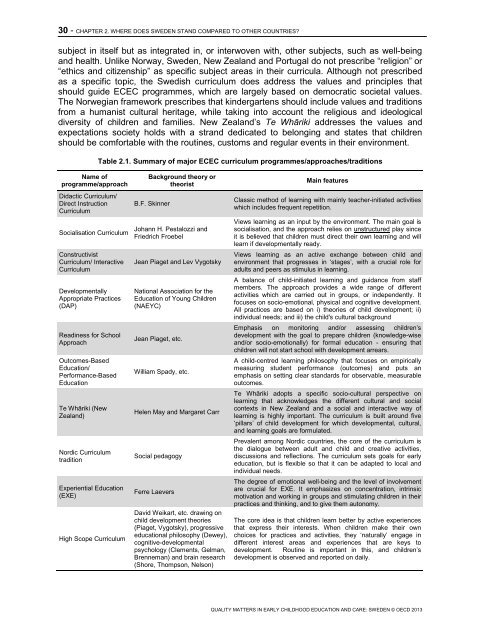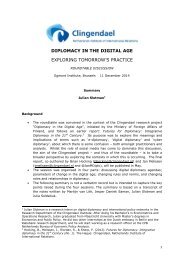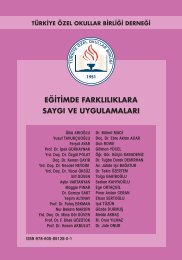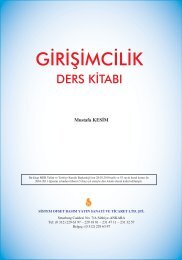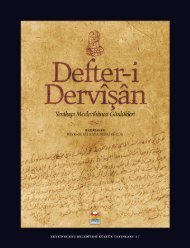SWEDEN%20policy%20profile%20-%20published%2005-02-2013
SWEDEN%20policy%20profile%20-%20published%2005-02-2013
SWEDEN%20policy%20profile%20-%20published%2005-02-2013
You also want an ePaper? Increase the reach of your titles
YUMPU automatically turns print PDFs into web optimized ePapers that Google loves.
30 - CHAPTER 2. WHERE DOES SWEDEN STAND COMPARED TO OTHER COUNTRIES?<br />
subject in itself but as integrated in, or interwoven with, other subjects, such as well-being<br />
and health. Unlike Norway, Sweden, New Zealand and Portugal do not prescribe “religion” or<br />
“ethics and citizenship” as specific subject areas in their curricula. Although not prescribed<br />
as a specific topic, the Swedish curriculum does address the values and principles that<br />
should guide ECEC programmes, which are largely based on democratic societal values.<br />
The Norwegian framework prescribes that kindergartens should include values and traditions<br />
from a humanist cultural heritage, while taking into account the religious and ideological<br />
diversity of children and families. New Zealand’s Te Whāriki addresses the values and<br />
expectations society holds with a strand dedicated to belonging and states that children<br />
should be comfortable with the routines, customs and regular events in their environment.<br />
Name of<br />
programme/approach<br />
Didactic Curriculum/<br />
Direct Instruction<br />
Curriculum<br />
Socialisation Curriculum<br />
Constructivist<br />
Curriculum/ Interactive<br />
Curriculum<br />
Developmentally<br />
Appropriate Practices<br />
(DAP)<br />
Readiness for School<br />
Approach<br />
Outcomes-Based<br />
Education/<br />
Performance-Based<br />
Education<br />
Te Whāriki (New<br />
Zealand)<br />
Nordic Curriculum<br />
tradition<br />
Experiential Education<br />
(EXE)<br />
High Scope Curriculum<br />
Table 2.1. Summary of major ECEC curriculum programmes/approaches/traditions<br />
Background theory or<br />
theorist<br />
B.F. Skinner<br />
Johann H. Pestalozzi and<br />
Friedrich Froebel<br />
Jean Piaget and Lev Vygotsky<br />
National Association for the<br />
Education of Young Children<br />
(NAEYC)<br />
Jean Piaget, etc.<br />
William Spady, etc.<br />
Helen May and Margaret Carr<br />
Social pedagogy<br />
Ferre Laevers<br />
David Weikart, etc. drawing on<br />
child development theories<br />
(Piaget, Vygotsky), progressive<br />
educational philosophy (Dewey),<br />
cognitive-developmental<br />
psychology (Clements, Gelman,<br />
Brenneman) and brain research<br />
(Shore, Thompson, Nelson)<br />
Main features<br />
Classic method of learning with mainly teacher-initiated activities<br />
which includes frequent repetition.<br />
Views learning as an input by the environment. The main goal is<br />
socialisation, and the approach relies on unstructured play since<br />
it is believed that children must direct their own learning and will<br />
learn if developmentally ready.<br />
Views learning as an active exchange between child and<br />
environment that progresses in ‘stages’, with a crucial role for<br />
adults and peers as stimulus in learning.<br />
A balance of child-initiated learning and guidance from staff<br />
members. The approach provides a wide range of different<br />
activities which are carried out in groups, or independently. It<br />
focuses on socio-emotional, physical and cognitive development.<br />
All practices are based on i) theories of child development; ii)<br />
individual needs; and iii) the child's cultural background<br />
Emphasis on monitoring and/or assessing children’s<br />
development with the goal to prepare children (knowledge-wise<br />
and/or socio-emotionally) for formal education - ensuring that<br />
children will not start school with development arrears.<br />
A child-centred learning philosophy that focuses on empirically<br />
measuring student performance (outcomes) and puts an<br />
emphasis on setting clear standards for observable, measurable<br />
outcomes.<br />
Te Whāriki adopts a specific socio-cultural perspective on<br />
learning that acknowledges the different cultural and social<br />
contexts in New Zealand and a social and interactive way of<br />
learning is highly important. The curriculum is built around five<br />
‘pillars’ of child development for which developmental, cultural,<br />
and learning goals are formulated.<br />
Prevalent among Nordic countries, the core of the curriculum is<br />
the dialogue between adult and child and creative activities,<br />
discussions and reflections. The curriculum sets goals for early<br />
education, but is flexible so that it can be adapted to local and<br />
individual needs.<br />
The degree of emotional well-being and the level of involvement<br />
are crucial for EXE. It emphasizes on concentration, intrinsic<br />
motivation and working in groups and stimulating children in their<br />
practices and thinking, and to give them autonomy.<br />
The core idea is that children learn better by active experiences<br />
that express their interests. When children make their own<br />
choices for practices and activities, they ‘naturally’ engage in<br />
different interest areas and experiences that are keys to<br />
development. Routine is important in this, and children’s<br />
development is observed and reported on daily.<br />
QUALITY MATTERS IN EARLY CHILDHOOD EDUCATION AND CARE: SWEDEN © OECD <strong>2013</strong>


